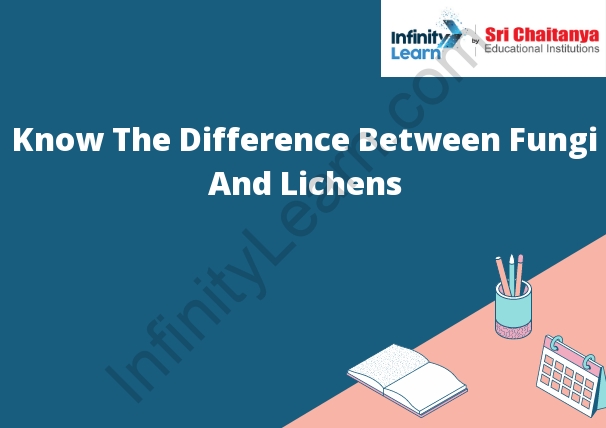Table of Contents
Fungi and Lichens
Fungi are a group of organisms that are neither animals nor plants. Fungi include mushrooms, toadstools, and yeasts. Fungi are heterotrophic, which means that they cannot make their own food and must eat other organisms or organic matter. Fungi reproduce by releasing spores into the air.
Lichens are a group of organisms that are made up of a fungus and an alga. The fungus provides the structure of the lichen while the alga provides the food. Lichens reproduce by releasing spores into the air. Lichens are very tough and can survive in extreme environments.

Fungi
are a group of organisms that can be found in many different places, including in the air, on plants, and in soil. Fungi can be single cells or colonies of cells. Some fungi are parasites, living on other organisms, while others are saprobes, living on dead or decaying material. Fungi are important in the process of decay and in the production of food products, such as beer and bread.
Fungi are a group of eukaryotic organisms that lack chlorophyll and therefore cannot produce their own food through photosynthesis. Fungi are heterotrophic, meaning they must ingest other organisms or their byproducts to acquire nutrients. Fungi vary in size and shape, and can be unicellular or multicellular. Fungi reproduce through spores, which are tiny, dust-like particles. When conditions are favorable, the spores germinate and grow into new fungi.
Fungi are important decomposers, meaning they break down dead organic matter and recycle nutrients back into the environment. Fungi are also used in the production of many foods, including bread, beer, and wine. Some fungi are also important in the pharmaceutical industry, as they produce compounds that can be used to treat diseases.
Lichens
are composite organisms made up of a fungus and an alga. The fungus provides the structure, while the alga provides the food. Lichens can grow in a wide variety of environments, including on rocks, trees, and even in bare soil.
Lichens are very important in the ecosystems they inhabit. They are the first to colonize new areas, and they help to stabilize the soil. They also provide food and shelter for other organisms.
What is the Difference Between Fungi and Lichens?
Fungi and lichens are two different types of organisms. Fungi are a group of organisms that includes mushrooms, molds, and yeasts. Lichens are a type of fungus that grows in partnership with an algae or a photosynthetic bacteria. Fungi and lichens have different life cycles and different methods of obtaining food. Fungi are heterotrophs that digest their food externally. Lichens are autotrophs that photosynthesize their food.
Fungi are a group of eukaryotic, single-celled or multicellular organisms that lack chlorophyll and photosynthesis. They obtain their food by breaking down organic matter. Lichens are a symbiotic relationship between a fungus and an alga. The fungus provides a structure for the alga to live on and the alga provides food for the fungus.
Lichens are a symbiotic relationship between a fungus and an alga. The fungus provides a protective sheath and water storage for the alga and the alga provides photosynthesis for the fungus. Lichens can be found on almost any surface including rocks, trees, and buildings.
Fungi are a group of organisms that includes mushrooms, molds, and yeast. Fungi lack chlorophyll and cannot photosynthesize. Fungi are important in the decomposition of organic matter.
The Relation between Lichen and Fungi
Lichens are a composite of a fungus and an alga. Fungi are a separate kingdom of organisms that includes mushrooms, molds, and yeasts.
Lichens are a symbiotic relationship between a fungus and an alga. The fungus provides the alga with a protective casing and water while the alga provides the fungus with food in the form of photosynthesis. Lichens can be found almost anywhere in the world and can tolerate a wide range of environmental conditions.
Edible Fungi
Edible fungi are those fungi that can be eaten and are not poisonous. There are many different types of edible fungi, and they can be found in many different places.
Some of the most common types of edible fungi include mushrooms, truffles, and morels. Mushrooms are the most common type of edible fungus, and they can be found in many different shapes and sizes. Truffles are a type of mushroom that is found in Europe and Asia, and they are considered to be a delicacy. Morels are a type of mushroom that is found in North America, and they are also considered to be a delicacy.
Edible fungi can be eaten raw or cooked. They can be added to dishes as a seasoning, or they can be eaten as a standalone dish. Edible fungi are a healthy source of nutrients, and they are low in calories.
Advantages and Disadvantages of Lichens
Lichens are a composite organism made of a fungus and an alga. The fungus provides the structure, while the alga provides the photosynthetic ability. Lichens have a number of advantages:
1. They are very adaptable and can grow in a wide range of environments, from deserts to mountaintops.
2. They are very long-lived, sometimes living for hundreds of years.
3. They are very efficient at extracting nutrients from their environment, making them a valuable source of food for many animals.
4. They are able to survive in extreme conditions, such as high temperatures, low humidity, and high levels of ultraviolet radiation.
Lichens also have a few disadvantages:
1. They are very slow to grow, sometimes taking many years to form a visible colony.
2. They are not very efficient at reproducing, so populations can be slow to recover from a disturbance.
3. They are often very sensitive to changes in their environment, and can be the first to indicate environmental damage.









